-
×
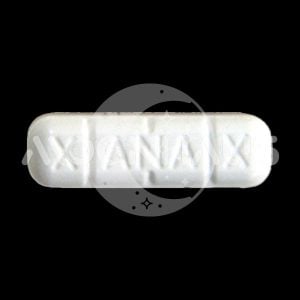 Xanax (2mg) pressed
1 × $10.00
Xanax (2mg) pressed
1 × $10.00 -
×
 Adderall Pressed (30mg)
1 × $17.00
Adderall Pressed (30mg)
1 × $17.00
Pure Emerald MDMA
$12.00 – $350.00Price range: $12.00 through $350.00
Moon Haus offers the purest Emerald M on the market! Delivered right to your doorstep!
Buy MDMA Online in Canada
SKU: PE-MDMA-MH
Categories: MDMA Crystals, Medicine, Molly, Other
Tags: buy mdma online, buy molly online, mdma, mdma canada, molly, molly canada, Moon Haus
Also bought together
this items could be interested for you
Sale!
Anxiety Med
Rated 5.00 out of 5
Pure Emerald MDMA (100MG, 500MG, 1G, 5G) – Canadian Psychedelic Medicines
Canadian Psychedelic Medicines – Purest Emerald MDMA
Buy MDMA Online in Canada
Moon Haus offers the purest MDMA on the market! Delivered right to your doorstep!
MDMA
3,4-Methylenedioxymethamphetamine
C11H15NO2
Disclaimer: Because MDMA is a possibly illegal substance, we do not advise or condone its usage where it is banned. We accept, however, that illegal drug use occurs, and we believe that providing accurate harm reduction information is critical to keeping people safe. As a result, the purpose of this guide is to assure the safety of individuals who choose to take the substance. Visit places where this medicine has been legalized.
OVERVIEW
MDMA is a synthetic substance that affects mood and perception, causing feelings of ecstasy, empathy, and emotional well-being in many people. MDMA (short for 3,4-methylenedioxy-methamphetamine) is a stimulant and psychedelic with molecular similarities. Colors and sounds (especially music) become more intense under its effect, making it a popular recreational drug, especially at parties and music festivals. Despite its image as a club drug, MDMA’s capacity to help individuals access their emotions made it a popular drug to treat depression and couples therapy in the late 1970s. Leo Zeff, the psychologist and psychotherapist who introduced MDMA to the realm of psychotherapy, has been termed “penicillin for the soul.” In 1985, the DEA put MDMA on the list of Schedule 1 narcotics when it became a popular recreational stimulant. Do you want to buy MDMA online Canada? Then, check this out.
The Multidisciplinary Association for Psychedelic Studies (MAPS), on the other hand, launched the first clinical investigation exploring MDMA’s therapeutic potential for PTSD in the early 2000s. One year following treatment, 68 percent of the 107 individuals in one research no longer experienced PTSD. The FDA has designated pure crystal MDMA (the only form of the drug that may be lawfully administered by a medical professional) as a “Breakthrough Therapy” in Phase III clinical studies for use as therapeutic assistance in the treatment of PTSD. MDMA is on pace for final FDA approval, and doctors might start prescribing it as early as 2022. MDMA can help people overcome social anxiety and also save their relationships. At high doses and when mixed with other substances, especially PMA/PMMA, MDMA can be fatal.
EXPERIENCE
It chemically stimulants and hallucinogens, producing feelings of increased energy, pleasure, emotional warmth, and distorted sensory and time perception.
An individual may experience the effects of MDMA within 45 minutes or so after taking a single dose.
Those effects include:
– Enhanced sense of well-being
– Increased extroversion
– Emotional warmth
– Empathy toward others
– A willingness to discuss emotionally-charged memories
– Enhanced sensory perception
What to anticipate?
In most clinical trials, researchers use dosages of MDMA ranging from 80 to 150 mg. The beginning of effects at this dose level happens 20 to 60 minutes after taking the drug, and the normal effects (euphoria, heightened empathy, energy, enhanced perceptions) typically lasts three to five hours. A calm, euphoric condition is commonly associated with the high, which includes emotional openness, a reduction in negative thoughts, and a reduction in inhibitions. MDMA can make the user feel as though everything is fine in the world and that connecting with others is simple. Sounds and colors may look more intense, and bodily sensations and touch may be increased. These side effects may contribute to the drug’s therapeutic potential by allowing users more access to their true selves. However, experts believe that the openness that MDMA promotes may speed up the link between patient and therapist, resulting in a healing environment.
MDMA-only
The grade of MDMA you consume will also influence your experience. MDMA purity is notoriously unpredictable, particularly when taken as a pill. In the United States, for example, the average MDMA content in ecstasy tablets is 30.13 percent. However, this contains samples as little as 0% and as large as 100%. Furthermore, while the sample size varies (from one to 1,000 tablets), state averages can be double or half of the national average. Still, this is a step forward: Because of police seizures of the chemical precursor safrole in 2008, street MDMA concentrations in pills were typically nil for years. Since then, the number of dud pills (tablets that do not contain MDMA) has decreased. Meanwhile, the proportion of ecstasy tablets containing only MDMA and no other adulterants has been increasing. In 2009, 60.1 percent of ecstasy tablets sold worldwide did not contain MDMA, whereas only 8.7% did. By 2018, the situation had flipped: just 8.8% of ecstasy tablets had no MDMA, while 54.8% had only MDMA.
Part of this is due to improved manufacturing techniques. Underground chemists now use a less restricted precursor to make the drug. But there’s also the dark net, where vendor ratings and competition push higher quality. What are you waiting for, buy MDMA online Canada using this link? Unlike in the past, when there was insufficient MDMA in tablets, there is now often too much. In recent years, super-strength ecstasy tablets have made headlines for killing unwary users. Whereas most ecstasy tablets contain between 80 and 120 mg of MDMA, some have been observed to have up to 300 mg. A high-end dose like this is deadly enough on its own, let alone when taken unexpectedly.
Bunk Police’s reagent test kits, as well as EcstasyData.org and Pill Reports’ services, are good resources for determining pill safety. The safest way to consume ecstasy pills is, to begin with, half a tablet and see how you feel after an hour unless you test the substance first.
EFFECTS
Pharmacology
MDMA increases the activity of three neurotransmitters in the brain: norepinephrine, also known as adrenaline, dopamine, and serotonin. MDMA’s euphoric effects, as well as the enhanced energy users experience, are caused by dopamine increases. Increases in norepinephrine/noradrenaline produce an increase in heart rate and blood pressure, whereas alterations in mood, appetite, sexual arousal, and sleep cycles are caused by increases in the serotonin system. The widespread experiences of emotional intimacy and empathy are likely due to serotonin spikes after ingesting MDMA. Wondering where to buy MDMA Canada online? You are just one click away.
Toxicology
Following MDMA use, potentially catastrophic neurological problems might ensue, most likely due to the drug’s short-term hypertension and dehydration. Many deaths are caused by excessively high doses, prior health issues, a “poor batch,” or a combination of these factors. Necrosis of the liver and cardiac tissue has also been described in fatal cases. Because people are more likely to have used various drugs in these circumstances, it’s impossible to say just how much MDMA plays in unpleasant effects. MDMA, like any other substance, should be consumed in moderation. More difficulties are associated with frequent use than with infrequent use. More than 1,100 people have participated in clinical trials with pure MDMA, with no serious side effects reported.
DOSE-RELATED EFFECTS
NOTE: The effects stated here aren’t meant to be exhaustive, especially at lower dose levels. They may alter as more trustworthy and broadly representative data becomes available. To account for the wide diversity in MDMA purity, these dose ranges are purposefully cautious. They assume purity of 100 percent (or 84 percent).
The microdose (5-40 mg)
Microdosing MDMA is not as popular as LSD or psilocybin, but with the increased interest in the practice, some people have pondered if it can improve their emotions and energy levels. Although some people have found success with MDMA, we do not suggest it. There is a ton of information to suggest that using MDMA frequently is bad for health. After all, MDMA isn’t like other psychedelics; it’s an amphetamine and a stimulant that affects your body in very different ways than a pill of LSD. Typical side effects include: a slight mood boost, vulnerability to emotions, sleep disturbances, hangovers, and heart problems are also a possibility.
Average (80-150 mg)
This is the most usual MDMA dose, as well as the dose utilized in clinical research. Users experience euphoria, increased energy, empathy, and other typical MDMA effects in this range. Many persons in this range “re-up,” which is taking an initial dose of 80-120 mg, followed by another dose of 40-80 mg. This is how MAPS conducts its clinical trials. Typical side effects include:
Euphoria intense
Introspection for healing
Increased self-esteem
Self-forgiveness and openness
Increased sociability and empathy
Increased vitality
Insomnia
Clenching/grinding your jaw
Comedown effects the next day, such as exhaustion and sadness (can also be experienced for the next one week)
Heavy (200+ mg)
Notwithstanding your tolerance level, consuming higher than 120milligram of MDMA or 1.5-1.8 mg/kg of body weight, could be dangerous. Between 81-100mg, given no more than once a month, positive effects tend to be enhanced and negative effects appear to be minimized. Regardless of tolerance, high dosages of high-purity MDMA can be life-threatening.
Euphoria intense
Self-forgiveness and openness
Increased sociability and empathy
Increased vitality
Tactile, visual, and aural senses are all improved.
Possible hallucinations or open-eye visions
Paranoia and agitation
Introspection for healing
Increased self-esteem
Panic
Dizziness
Headaches
Vomiting and nausea
Shivering/trembling Dehydration
Teeth Clenching
Insomnia
Seizure
Other Medicine Interactions Positive interactions:
Mixing psilocybin with MDMA, also known as “hippie flipping,” is a popular combo. While it is not suggested to mix MDMA with any other drug, it can be fun and improve the characteristics of both substances, particularly bliss. On the negative, if the timing is off, the MDMA comedown could change your mood during the final hours of your mushroom voyage.
LSD: Combining LSD with MDMA (sometimes known as “candy flipping”) offers advantages and disadvantages, similar to psilocybin. Because MDMA amplifies the psychedelic effects of LSD, the comedown from this combo can be considerably more difficult than with mushrooms. It’s critical to get the intake timing right. For more information to buy Ecstasy online in Canada, visit us today.
Ketamine: Another popular combo, many “kitty flip” users claim that it brings out the greatest qualities of both drugs.
Neutral interactions:
Many people use cannabis to help them cope with the aftereffects of MDMA. This is possibly one of the least dangerous combos. Negative relationships:
Because both substances are metabolized by the liver, mixing them can result in a buildup of MDMA in the body, as metabolizing alcohol inhibits the elimination of MDMA. This can result in more severe unfavorable responses and side effects. Learn about several sorts of psychedelic medicines, what they’re used for, and how to get them securely.
Potential Advantages
While MDMA is most known for inducing feelings of euphoria and general happiness, the drug’s effects go beyond a few hours of bliss—it can cure trauma, anxiety, disconnection, and potentially more. MDMA’s potential to diminish activity in the limbic system and inhibit communications between the temporal lobe and prefrontal cortex, which are both involved in emotional control and reaction, was discovered in recent research on the drug’s effects on the brain. An increase in activity in these areas is seen in those with anxiety, suggesting that MDMA can help with linked mood issues.
According to the study, MDMA improves communication between the amygdala and the hippocampus. People with PTSD, on the other hand, see a decrease in communication between these areas.
Another recent study led by Dr. Ben Sessa indicated that MDMA could be the most effective treatment for acute childhood trauma by allowing patients to safely express their feelings. “[MDMA] provides the capacity to hold the traumatized patient in a state of emotional security, making room for an empathetic of self-reflection as written by Sessa, plus the fact that being the first time in their lives, they can come with very traumatic memories and not being overwhelmed by the strong effects of negativity that most times come with recall of their most frightening thoughts. “One of the reasons MDMA is proven to be such a successful treatment for PTSD is because of this empathic self-reflection.
MDMA is also recognized for making users feel more connected and empathic, making it an effective antidote to feelings of isolation and disconnect, especially in couples. Relationship therapists are beginning to incorporate the medication into their sessions to assist couples in improving communication, increasing intimacy, and reconnecting. Not for nothing is it known as “the love drug.”
Risks
Elevated blood pressure and heart rate, nausea, sweating, tremors, jaw clenching, nystagmus (a condition in which the eyes make repetitive, uncontrolled movements), urinary incontinence hyperreflexia, tension or muscle aches, hot and cold flushes, chills, and insomnia are all possible side effects of MDMA use. Overdosing on MDMA can and does result in death. A high dose can contribute to life-threatening complications like heat, fatigue, and dehydration. It can also produce serotonin syndrome, or too much serotonin, which can result in muscle rigidity, fever, seizures, and other symptoms.
After a night of excessive MDMA usage, some people experience an unpleasant comedown, including despair and exhaustion. Dr. Ben Sessa describes how the typical MDMA comedown is caused by overexertion, poor sleep, poor food, and polydrug usage in our microdosing course. As a result, you can avoid the comedown by eating and resting well before and after taking MDMA, staying hydrated if you’re dancing, and avoiding other narcotics (including alcohol).
A recent study also suggests that rather than a comedown, people in clinical trials report an MDMA “afterglow,” implying that pure MDMA does not induce these effects. MDMA whose quality has been altered or “ecstasy,” that is frequently coupled with bath salts, dextromethorphqn, ephedrine, methamphetamine, or cocaine, is responsible for the majority of negative side effects. Between 2009 and 2013, 87 percent of the ecstasy examined by the DEA contained no MDMA and was largely made up of bath salts. MDMA is not addictive in and of itself, but some people may become hooked on impure versions of MDMA due to the highly addictive nature of methamphetamines.
A warning about PMA/PMMA (also known as “Death”)
The banning of MDMA in most countries (and, in particular, police seizures of safrole in 2008/2010, which disrupted ecstasy supply) has resulted in the introduction of various substitutes. These chemicals, about which we know very little, are typically significantly more deadly than MDMA. Despite this, many governments consider them legal by default.
When instead of safrole, aniseed oil is used to make MDMA, the result is para-Methoxyamphetamine (PMA) which is dangerous drugs (PMMA).
As early as 1993, both have been linked to the deaths of unwitting users. At least three people died in December 2014/January 2015 after consuming the same pink “Superman” tablets containing PMA. You are at the right place, check here to buy Ecstasy Canada.
Users taking a “safe” dose of what they think is ecstasy are at risk of severely overdosing on a far more hazardous chemical because PMA/PMMA is 10 to 20 times more strong than MDMA. Because PMA/PMMA is slower-acting, experienced ecstasy users are more prone to overdose.
The problem is that PMA/PMMA is not MDMA substitute. They have distinct pharmacological effects. They suppress specific enzymes (such as monoamine oxidase, or MAO) that counter serotonin release, unlike MDMA. As a result, they can cause serotonin syndrome, a potentially fatal overabundance of serotonin in the body. While reagent testing can help identify the presence of PMA/PMMA as adulterants, the presence of actual MDMA could mask the presence of PMA/PMMA. Checking pills against internet user reports (such as EcstasyData.org and Pill Reports) is a prudent precaution.
PTSD THERAPEUTIC USE
MDMA was cleared for use in Phase III clinical trials to treat post-traumatic stress disorder in the United States in 2017. (PTSD). One of the final stages of testing before the medicine is legally approved for therapeutic use is this. In 2017, the FDA designated MDMA as a “breakthrough therapy,” and the medicine is currently awaiting full FDA approval.
MAPS, which began researching and pushing for the use of MDMA to treat PTSD in 1986, is funding the experiments. Though MAPS supports other psychedelic therapies such as LSD and psilocybin, they choose to focus on MDMA because it is “the gentlest psychedelic” and “the perfect medication for treating PTSD,” according to MAPS founder Rick Doblin.
This is supported by research. MAPS conducted a pilot trial with 20 PTSD patients and found that the placebo group only responded to the therapy 25% of the time (2 of 8 patients). The MDMA group, on the other hand, received an 83 percent response rate (10 of 12 patients). Nearly everyone who had taken MDMA before psychotherapy no longer satisfied the PTSD criterion after treatment. A single session caused no harm to the patient’s health, according to the study. Perhaps most impressively, long-term follow-up research discovered that 74 percent of patients who had their PTSD symptoms eased in the initial study remained PTSD-free years later. Are you looking to buy MDMA online in Canada? Check our website.
Researchers discovered that 54 percent of the 72 patients who received MDMA-assisted psychotherapy no longer classified as having PTSD in a later Phase II experiment (compared with 23 percent in the control group). That figure had climbed to 68 percent a year later.
There are numerous ideas as to why MDMA is such a powerful cure for PTSD.MDMA decreases fear (fear is the root of PTSD) and enhances therapeutic alliance, or the bond between patient and therapist, which is one of the most crucial components in a patient’s recovery, according to Doblin. MDMA also stimulates and quiets important areas of the brain that are linked to reduced anxiety, depression, and trauma.
Many of the patients who receive this treatment are war veterans who have developed a treatment-resistant type of PTSD. They claim that MDMA therapy allowed them to face their past trauma with a deeper sense of acceptance, warmth, and empathy for themselves, allowing them to manage and recover more effectively.
Anxiety
MDMA shows potential treatment for social anxiety in people with autism and life-threatening conditions, according to preliminary findings from a few studies. [18] Twelve people with autism were given MDMA or a placebo over two all-day therapy sessions in the first clinical research investigating MDMA for autism. During their meetings, 91 percent of individuals who took the substance reported “enhanced sentiments of empathy/connectedness” and 86 percent reported “comfort of communicating,” both of which continued after use.
MDMA’s capacity to shift patients with social anxiety toward openness and stimulate introspection, which can be performed with infrequent or even single doses of MDMA, is regarded to be the reason for its efficacy.
This same process appears to be at work in the treatment of clinical anxiety in patients with life-threatening disorders. [19] MAPS is now undertaking a Phase II experiment to investigate MDMA’s potential in this area.
Alcohol Dependence
Ben Sessa launched the first clinical experiment investigating the efficacy of MDMA in the treatment of alcoholism in 2017. Sessa believes that MDMA is great for letting patients examine and face distressing memories without being overwhelmed by negative reactions, similar to how MDMA helps with PTSD. “We know that MDMA benefits those who have experienced trauma and that it helps to foster empathy,” Sessa added. “Many of my alcoholic patients have had some form of trauma in the past, which contributes to their addiction.”.
PERSONAL DEVELOPMENT
Spiritual Consciousness
Though classic psychedelics like LSD and psilocybin are more commonly connected with spiritual connections, MDMA is also a tool for spiritual growth for many. The drug’s potential to generate feelings of oneness, connectivity, empathy, compassion, warmth, and goodwill toward others is praised by some spiritual leaders and gurus. Spiritual epiphanies and personal development are frequently triggered by states like these.
Brother Bartholemew, a Benedictine monk, described it this way:
“In conversation, MDMA always pulls me into an intimate realm.” This discourse has a unique feel to it. One senses a gravity, a sense of the moment’s weight, of something fundamental, of life’s significance. It’s an interior place, free of masks and pretense, completely open and honest. It is an intellectual and metaphysical relationship, not an erotic one. Does this make sense to you? One is aware that this is an inner communication that is rarely reached in conventional conversation. There are no suitable words to describe this condition of awareness; all I can say is that it is necessary for my experience.”
MDMA can be utilized in a variety of ways to promote spiritual growth, from quiet reflection to group meditation to counseling. If addressed with the appropriate intention, even rolling at raves can have a spiritual quality. Seeking to buy Ecstasy Canada? Explore for more details
Relationships
MDMA is also proving to be an effective tool for forming or healing bonds. Relationship therapists are starting to incorporate the medication into their sessions to assist couples to improve their communication, intimacy, and reconnecting. Its usage in relationship therapy dates back to the 1970s when a group of unconventional therapists utilized MDMA to assist partners to establish empathy and communication, influenced by the work of psychopharmacologist and MDMA champion Alexander Shulgin. According to MAPS’ Brad Burge, the method is regaining popularity due to MDMA’s ability to “support the psychotherapy process by helping participants feel safer and more connected to themselves, each other, and their therapist.”
This heightened connection between two people has been dubbed the “MDMA bubble” by Katie Anderson, a British doctoral researcher working on a Ph.D. on “navigating intimacy with ecstasy.” It provides a safe environment for couples to have their feelings heard and respected. Couples have expressed sexual aspirations, the pain of losing a parent, and even confessed to affairs, according to her studies. “I think we keep ourselves protected because we don’t want to get wounded,” one responder said. However, while you’re on the drug, it helps you to break down those barriers and simply be available to others.”
LEGALITY
In the United States, MDMA is classified as a Schedule I substance, making it unlawful to produce, distribute, or own without a DEA license.
In contrast to the findings of MDMA clinical studies for PTSD, this schedule shows that the substance has no therapeutic efficacy. Given the robustness of this research, medical MDMA is likely (if not inevitable) to become accessible for prescription shortly. MDMA is classified as a Class A drug in the United Kingdom, which is essentially the same as Schedule I: it is unlawful to acquire, sell, or manufacture MDMA without a license. Most countries are similar, but some are more lenient in practice. The substance is banned in the Netherlands, for example, yet little amounts are frequently overlooked by police. Meanwhile, in Peru, possessing up to 250mg (one-quarter gram) of marijuana is lawful as long as it is your sole narcotic. Looking for where to buy MDMA Canada? Visit our website
STATISTICS AND HISTORY
A brief background
MDMA’s history predates the rave culture that popularized it by decades. It was first manufactured and patented as an appetite suppressant by the German pharmaceutical company Merck, according to popular belief. The medication was created by Merck in 1912, however, the appetite suppressing narrative is a myth. It was created as a blood-clotting medication with the potential to save lives.
In the early years after its synthesis, very little testing was done. Merck revived interest in the medication in 1927 after chemist Max Oberlin hypothesized that it could mimic adrenaline because the two substances had similar molecular structures. Chemical precursor prices rose shortly after this early research began, and experimentation was put on hold.
While no one knows when the initial human trials took place, it is known that the US military tried MDMA and other chemicals on humans in the 1950s. In 1960, a Polish-language scientific publication published the first “recipe” for MDMA, and pills began to appear in captured contraband in the 1970s.
In 1978, when American psychopharmacologist Alexander Shulgin first learned about MDMA, he synthesized it and tested it for himself, becoming the first person to document MDMA usage in a human subject. Its usage in aided psychotherapy was believed to boost patient self-esteem and improve therapeutic dialogue in the 1980s. While Shulgin is known as the “Godfather of Ecstasy,” MDMA was invented by a German chemist named Anton Kollisch, who died in 1916 without realizing the impact he had on the world.
The drug has been classified as a Schedule I drug in the United States since 1985, thereby making it illegal for all purposes. Clinical trials have recently been approved and undertaken, and the FDA designated MDMA as a “breakthrough therapy” in 2017. Doctors are expected to begin prescribing the medicine as early as 2022.
In 2011, a federal judge sided with the ACLU, which contended that MDMA possession and use penalties were based on obsolete science and resulted in lengthy jail sentences. Other courts, on the other hand, have upheld the former punishment laws. Looking to buy Ecstasy online Canada? Visit us today.
MYTHS
“Ecstasy will cause me to consume so much water that I shall perish.”
Although overhydration was the cause of one famous ecstasy-related death, MDMA will not make you drink yourself to death. In this case, the victim believed that drinking a big amount of water would help her recover from a terrible ecstasy experience. She died, unfortunately, because MDMA makes it difficult for the body to metabolize water.
This isn’t to say that you shouldn’t drink water when on MDMA. Because a high dose can impair your capacity to manage your hydration, you should drink plenty of water – especially if you’re dancing or exerting yourself. Lack of knowledge is the leading cause of MDMA-related mortality. People who do not understand how to take the medicine responsibly end up putting their health at risk. It is a generally safe medicine when used carefully.
“MDMA is strictly a club drug.”
Although MDMA is widely used in clubs due to its ability to enhance music and dancing, it is not primarily a clubbing drug. Many people use it for religious or therapeutic purposes. It can be used for a variety of personal and interpersonal development purposes, and clinical research has shown that it can help people with PTSD, anxiety, addiction, and other issues. Buy Ecstasy Canada here
“MDMA causes holes in the brain.”
There’s no proof that modest use (less than 100mg every few weeks) causes brain harm. Frequent high-dose use can lead to heart and memory issues. Furthermore, combining MDMA with other drugs, particularly PMA/PMMA, makes it relatively easy to overdose. An overdose of MDMA can be fatal.
What exactly is MDMA?
The chemical name for MDMA is 3,4-Methylenedioxymethamphetamine. It’s one of the most popular psychedelics in the world (albeit it’s officially an empathogen). It was once thought of as more of a “party drug” than LSD or psilocybin. However, it’s making a comeback as a game-changing psychotherapeutic tool. Researchers are particularly excited about its potential for treating PTSD.
It is available in two main forms: tablets (or pills), often known as “ecstasy,” and crystals (or powder), also known as “Molly.”
Is it possible to test my MDMA to verify if it’s safe to use?
Even if you trust your supplier, testing your MDMA is always a good idea. Bunk Police’s reagent test kits can detect hundreds of adulterants and replacements, giving you peace of mind and maybe saving your life. Common imposters include DXM, MDA, methamphetamine, methylone (“bath salts”), and
PMA/PMMA. The reagents of the Marquis, Mecke, and Simon can help rule them out. Simply add a few drops of the reagent to a little amount of MDMA in a sterile test tube or onto a sterile white ceramic surface. Then compare the color change (or lack thereof) to the spectrum brochure provided.
MDMA is a sort of drug.
It belongs to the amphetamine family of drugs, which also includes speed and methamphetamine. MDMA, on the other hand, is a lot safer. It’s an amphetamine that belongs to the same phenethylamine family as mescaline. Of course, the outcomes are vastly different. MDMA is classed as an entactogen or euphoric empathogen based on these findings.
What is the function of MDMA?
It’s a stimulating medicine regardless of dosage. The majority of users experience physical and mental exhilaration, as well as minor visual benefits like color intensification. Increased endurance (for example, for dancing) is also frequent.
Increased sweating, thirst, jaw clenching, and involuntary shaking are among the side effects.
What’s the best way to take MDMA?
MDMA can be taken orally or insufflated as an oral tablet, a crystal or powdered form, or both (snorted). Snorting MDMA, on the other hand, is unpopular because of the unpleasant taste, risk of nose bleeds (as well as anxiety and palpitations), and short-term effects. To avoid the bitter taste, many individuals incorporate the crystal into their drinks. Another option is to smoke or vape, but this is much less popular than snorting.
It may take an hour for effects to manifest. Avoid overdosing. Mixing with other medicines is not recommended.
What is the half-life of MDMA?
For three to six hours, the effects linger. 20 to 90 minutes after the dose, you should start to feel them. The peak might last anywhere from 90 minutes to three hours before gradually fading over the next one to two hours.
You may suffer a “comedown” or post-trip “crash” marked by feelings of despair and weariness after the original benefits have gone off. These can be minor or severe, and they can continue anywhere from 12 to 72 hours, or even longer.
What about the purity of MDMA crystals or powder?
Pure MDMA, even in crystal or powder form, is hard to come by on the street, despite what you may have been told. As previously stated, however, the concentration of MDMA on the street has been increasing in recent years. It has reportedly reached 83 percent in the United Kingdom. This is about as pure as it gets.
MDMA has a purity of 100 percent in its pure form. A sample is unlikely to be pure, regardless of its form. Adulterants are dangerous, therefore there’s certainly something else in it. A wise precaution is to use a test kit. By observing a color change on a chart, these can detect the presence of MDMA as well as hazardous adulterants. Chemical reagent tests, on the other hand, cannot determine purity; they are just suggestive at best. As a result, they should be used in conjunction with other harm reduction techniques.
What is the duration of MDMA in your system?
It lingers in the system for 24-96 hours, with 72 hours being the norm, just like other amphetamines.
Is it possible to detect it in a drug test?
MDMA is structurally similar enough to amphetamines to result in a positive urine drug test up to five days following usage. Hair samples can also be detected for up to 90 days.
Is it a source of tolerance?
Because MDMA depletes serotonin levels, users frequently experience a “hangover” that lasts several days and leaves them feeling melancholy or cognitively fatigued. As a result, an MDMA tolerance should last many days. Long-term MDMA usage can be neurotoxic and impact memory and mood, so it’s better to limit your use to once a month.
Is it habit-forming?
Studies have thus far failed to provide a conclusive response to this question, according to the National Institute on Drug Abuse. Most people who use MDMA, however, find it to be non-addictive.
Is it possible to combine it with other drugs?
MDMA should never be taken with other substances because some combinations can be fatal. It’s advised to avoid mixing it with alcohol because it affects the kidneys and liver. It’s also best not to combine it with DXM, tramadol, or MAOIs, as these combos can be deadly. If you’re dancing, it’s recommended to take MDMA without any other drugs and with plenty of water. This should assist in reducing health hazards.
Is it possible to microdose MDMA?
Although some people have reported microdosing MDMA, long-term use could be hazardous. Microdosing can cause a protracted hangover since it depletes serotonin levels. To avoid long-term neurotoxicity, MDMA should only be used once a month at most. To buy MDMA online Canada, Click here.
| Quantity | 100MG, 500MG, 1G, 5G |
|---|
3 reviews for Pure Emerald MDMA
Add a review Cancel reply
Related products
Rated 5.00 out of 5
$42.00 – $380.00Price range: $42.00 through $380.00
Rated 5.00 out of 5
$20.00 – $555.00Price range: $20.00 through $555.00
Rated 5.00 out of 5
$40.00 – $535.00Price range: $40.00 through $535.00
Rated 5.00 out of 5
$29.00 – $345.00Price range: $29.00 through $345.00
Edibles
Rated 5.00 out of 5
$25.00 – $48.00Price range: $25.00 through $48.00
Rated 5.00 out of 5
$115.00 – $1,950.00Price range: $115.00 through $1,950.00
Rated 5.00 out of 5
$40.00 – $75.00Price range: $40.00 through $75.00
Rated 5.00 out of 5
$54.00 – $740.00Price range: $54.00 through $740.00

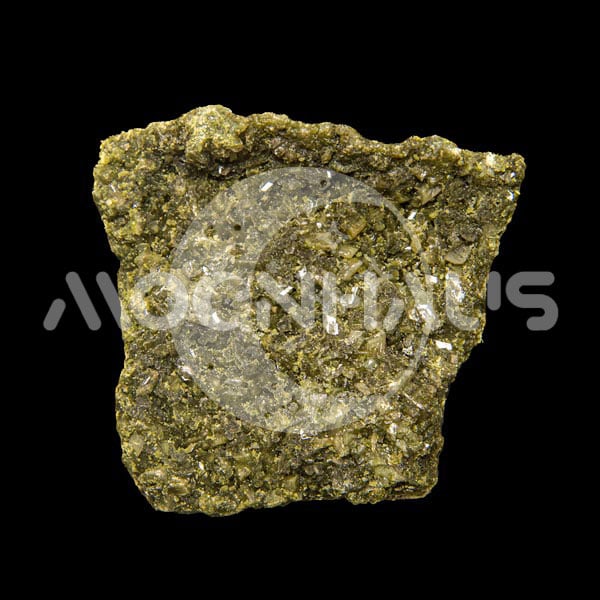


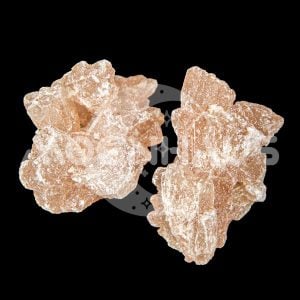
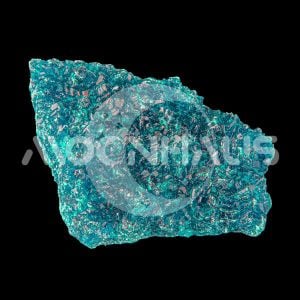
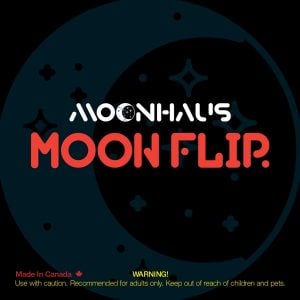
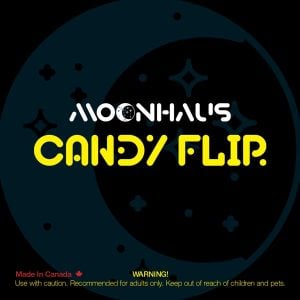
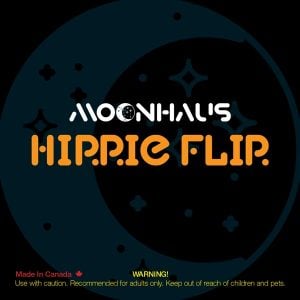
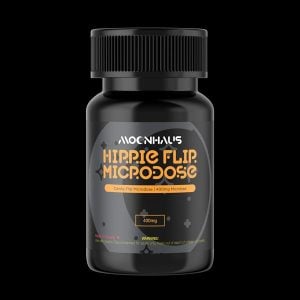
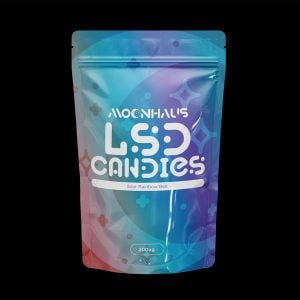
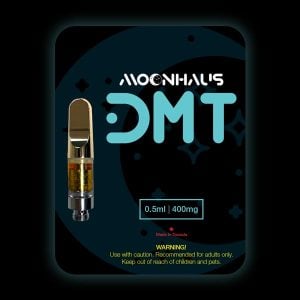
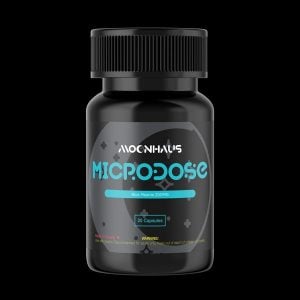
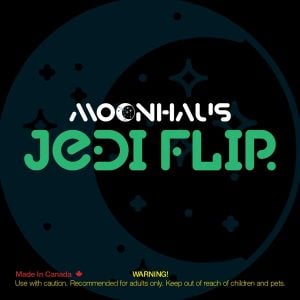
J. Kenny –
Very interesting product, easy to use, lots of uses and mind-blowing. Totally recommend.
Alexander –
You guys are amazing, you have a lifelong customer in me, thank you guys very much.
Thanakorn Chawla –
Quick service and accurate dexcription of item.